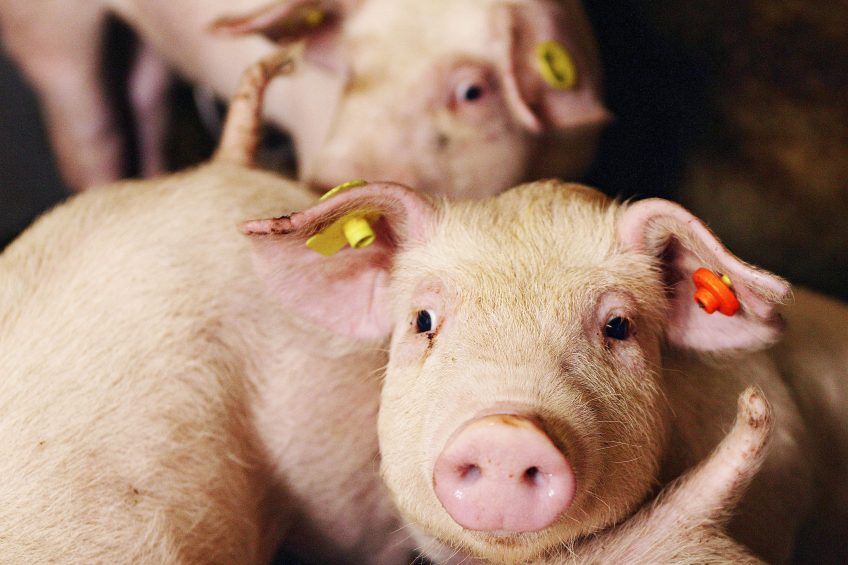Time to move ahead in pork production

The antimicrobial discussion has moved on from analysing the potential risks, to managing the new situation where pork producers will have to raise pigs using less, or even without, antibiotics. Meanwhile, there is a predicted increase in demand for protein, unprecedented restrictions on land and water use and rising input costs. What should producers do now?
Producing pork with fewer antibiotics is a growing requirement from consumers and governments. Many factors must be considered when trying to define reasonable levels of antimicrobial use, including disease prevalence, antibiotic susceptibility patterns, antibiotic prescribing practices and legislation and finally farmer and veterinarian behaviour patterns.
Why measure antibiotic consumption?
Comparisons between populations or pig production systems raised under similar conditions can give more constructive answers and guidance. Since 2009, ESVAC (European Surveillance of Veterinary Antimicrobial Consumption) has been collecting usage in the EU. In their most recent report they highlight some of the difficulties collecting and comparing the data from different countries while indicating that there is large variation between countries and that overall the use of antimicrobials in animals has been following a downward trend. Until consistent comparable measurements of consumption are routinely available to farmers, veterinarians in clinical practice, researchers and policy-makers, it will be difficult to quantify and resolve this growing challenge. To allow for credible data comparison, ESVAC has suggested the use standardised units of measurement like the ‘Defined Daily Dose Animal’ (DDDA).
Strategies to reduce reliance on antibiotics
A whole herd or system approach is essential for successful reduction in antimicrobial use. There are 4 main steps required to achieving this:
- Education : It is essential for pork producers to be informed of the best practices and understand legislation and public health developments that impact their business.
- Diagnosis : Specialist veterinarians will start with a deep understanding of the disease situation on the farm and can collect samples and carry out testing to determine the cause of an infection or disease on the farm. Often they are dealing in multifactorial diseases and need to consider the whole farm in the analysis (infection chain). At this stage if a bacterial cause has been found, the laboratory can carry out tests for the most appropriate antimicrobial treatment (antibiotic susceptibility testing). For each bacteria or antibiotic this can be reported as susceptible, intermediate or resistant. More accurate still, is to determine the MIC (Minimum Inhibitory concentration) the lowest concentration of an antimicrobial that will inhibit the growth of that bacteria.
- Advice on control : Once the complete picture is understood the interventions can be implemented. Specific interventions, for example, a curative treatment with an antibiotic using prudent use principles to stop the disease and reduce suffering and mortality. Critically, this must be followed by specific control of both bacterial and viral infections using high quality reliable vaccines. The vet is ideally placed to advise farmers on the correct timing of vaccines to maximise efficacy. Again it is essential to control all sections of the production chain (prevention chain).This will result in maximum immunity to the diseases that affect the farm. It has been demonstrated that usage of appropriate vaccinations can result in less antibiotic use on the farm. General interventions are often as important. Reducing stress, particularly at the time of weaning, by increasing the weaning age and optimal nutrition are also beneficial, particularly to reduce the need for antimicrobials to control post weaning diarrhoea. Minimising exposure to pathogens is also necessary. This can be achieved with internal biosecurity, ventilation and hygiene to reduce presence, load and spread of pathogens. All in all out management, good washing and disinfectant processes are critical in all farms. Good external biosecurity will avoid new pathogens entering the productions system. A study compared the levels of implementation of biosecurity in pig production and the possible associations between the biosecurity compliance and antimicrobial use and production characteristics. It was concluded that there is room for improvement in biosecurity. Improved biosecurity and management practices focused on prevention could lead to a reduction in antimicrobial use, better overall health status and higher animal production and welfare.
- Monitor outcomes : By routine and periodic follow up and revision of disease control plans, a veterinarian can optimise the preventative plan. By monitoring treatment outcomes and antibiotic susceptibility results the vet can update the advice on the best antibiotic treatment.
Alternative intervention methods
Herd-level interventions are needed to achieve national and European antibiotic reduction targets. Recent surveys carried out with pig farmers and vets found that many interventions to reduce antibiotic use were relatively easy to implement and had a high likelihood of success. Experts found that the top 5 measures in perceived return on investment were:
- improved internal biosecurity
- use of zinc/metals
- implementation of a diagnostic/action plan
- feed quality/optimisation
- climate/environment modifications.
Veterinarians also ranked internal biosecurity and implementation of vaccinations as the most valuable interventions to reduce antibiotic use.
Alternative preventive measures are not well understood in terms of the feasibility, effectiveness and return on investment. The objective of a recent before and after study was to assess for one year, across 70 farrow-to-finish pig farms located in Belgium, France, Germany and Sweden, the technical and economic impact of herd-specific interventions aimed at reducing antimicrobial usage in pig production.
Following interventions:
- A substantial reduction in antimicrobial use was achieved without negatively impacting overall farm performance.
- Better compliance with the plan resulted in higher reduction in antibiotic use.
- A median reduction of 47% of the treatment incidence from birth to slaughter was achieved (over 30% median antimicrobial expending reduction).
- Mortality, daily weight gain and feed conversion ratio did not significantly change over the course of the study.
- On the other hand, the number of weaned piglets per sow per year slightly increased.
Pork producers, their vets and advisors should take the challenge of antimicrobial use reduction as an opportunity to optimise production and disease prevention tactics for sustained productivity and improved animal health and welfare.
References available on request












